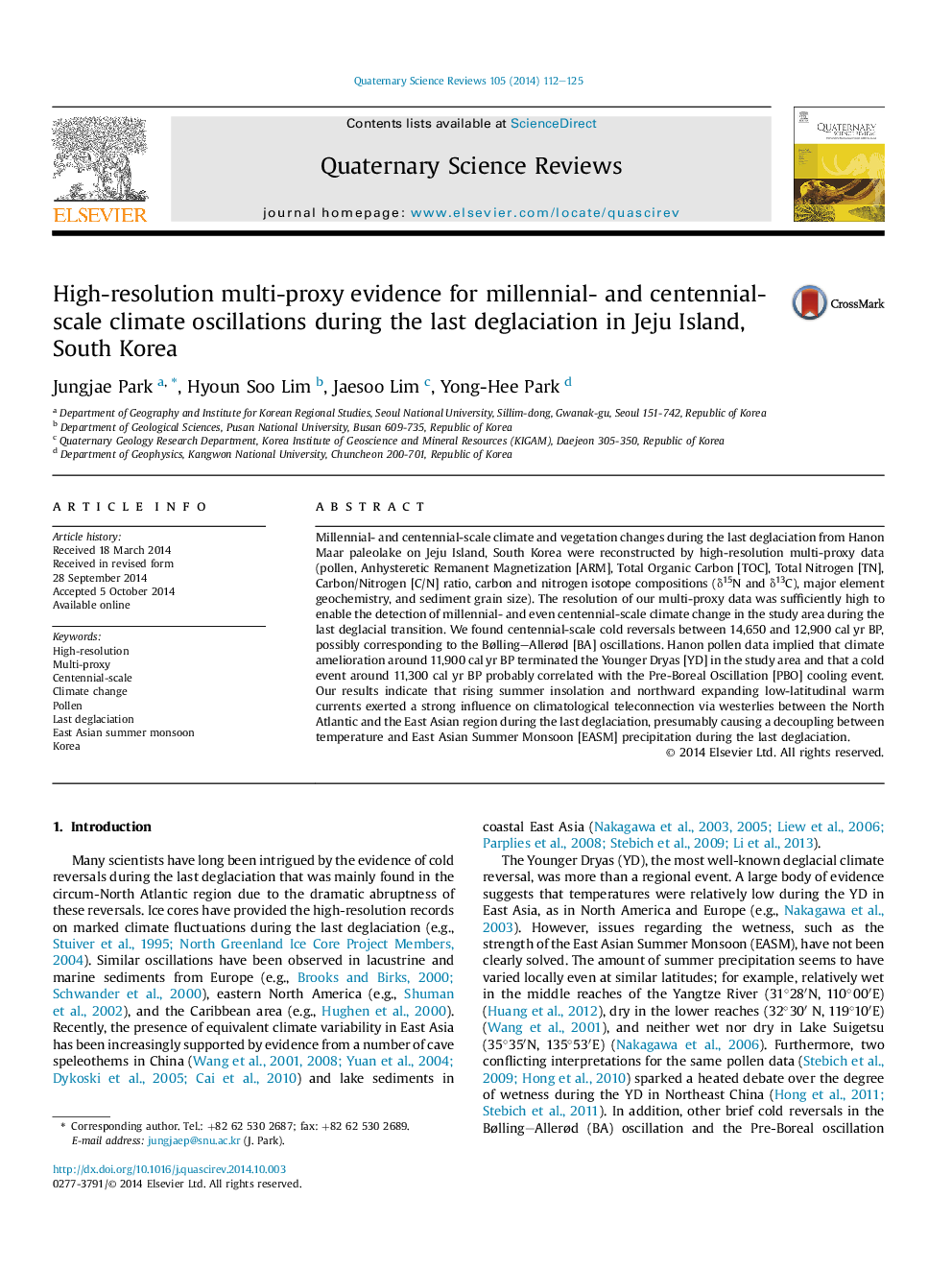| Article ID | Journal | Published Year | Pages | File Type |
|---|---|---|---|---|
| 6446112 | Quaternary Science Reviews | 2014 | 14 Pages |
Abstract
Millennial- and centennial-scale climate and vegetation changes during the last deglaciation from Hanon Maar paleolake on Jeju Island, South Korea were reconstructed by high-resolution multi-proxy data (pollen, Anhysteretic Remanent Magnetization [ARM], Total Organic Carbon [TOC], Total Nitrogen [TN], Carbon/Nitrogen [C/N] ratio, carbon and nitrogen isotope compositions (δ15N and δ13C), major element geochemistry, and sediment grain size). The resolution of our multi-proxy data was sufficiently high to enable the detection of millennial- and even centennial-scale climate change in the study area during the last deglacial transition. We found centennial-scale cold reversals between 14,650 and 12,900 cal yr BP, possibly corresponding to the Bølling-Allerød [BA] oscillations. Hanon pollen data implied that climate amelioration around 11,900 cal yr BP terminated the Younger Dryas [YD] in the study area and that a cold event around 11,300 cal yr BP probably correlated with the Pre-Boreal Oscillation [PBO] cooling event. Our results indicate that rising summer insolation and northward expanding low-latitudinal warm currents exerted a strong influence on climatological teleconnection via westerlies between the North Atlantic and the East Asian region during the last deglaciation, presumably causing a decoupling between temperature and East Asian Summer Monsoon [EASM] precipitation during the last deglaciation.
Keywords
Related Topics
Physical Sciences and Engineering
Earth and Planetary Sciences
Geology
Authors
Jungjae Park, Hyoun Soo Lim, Jaesoo Lim, Yong-Hee Park,
